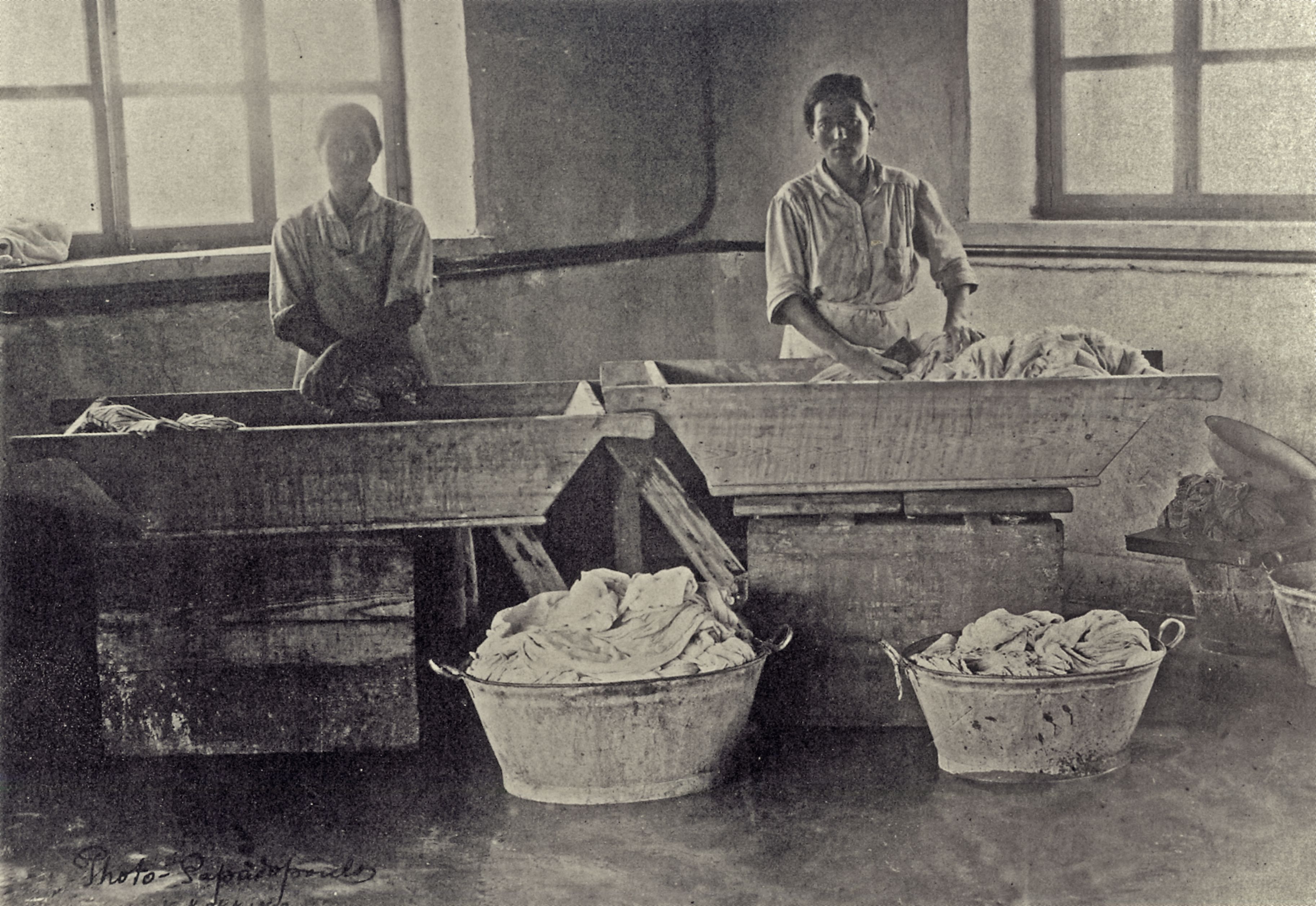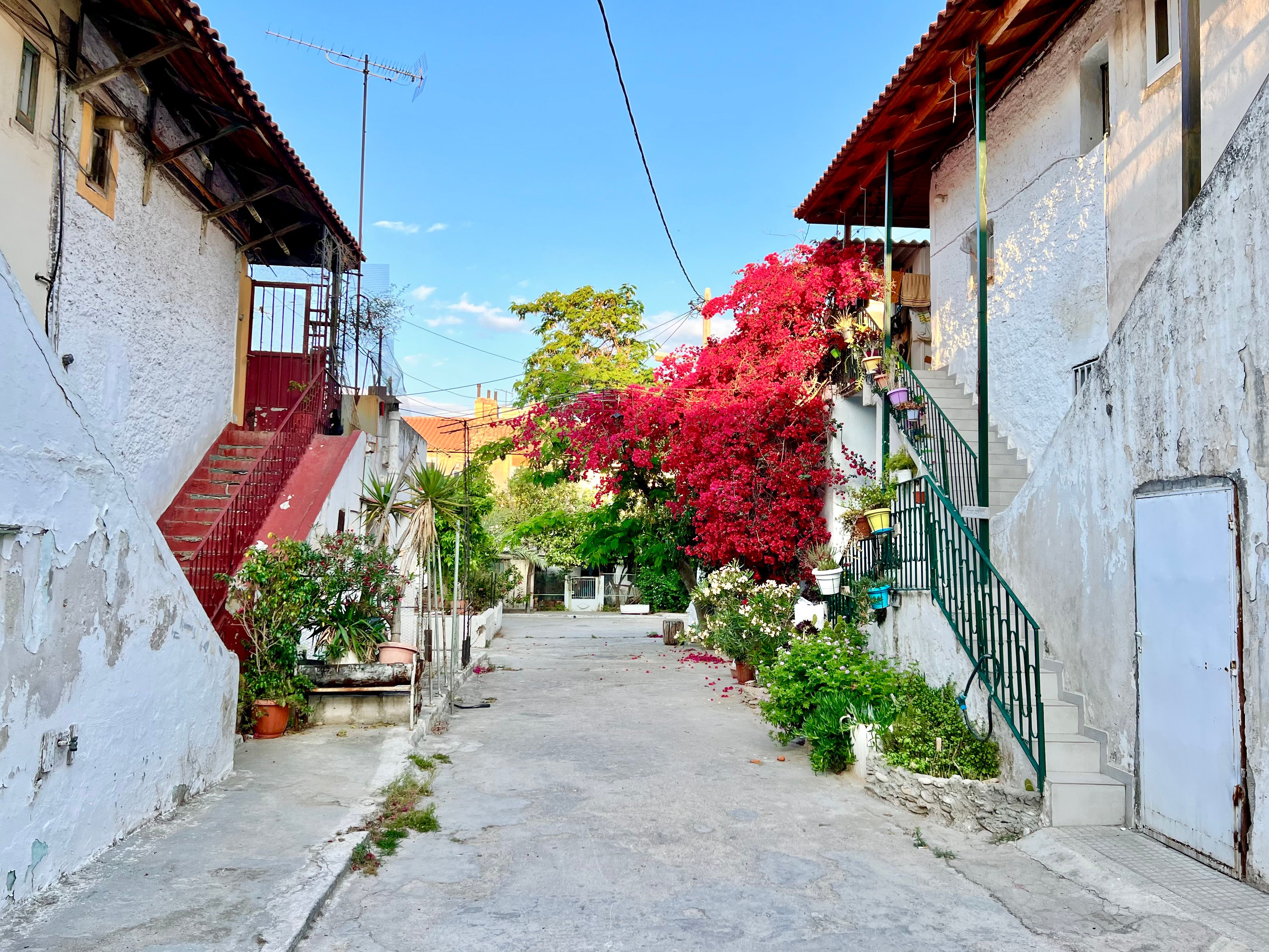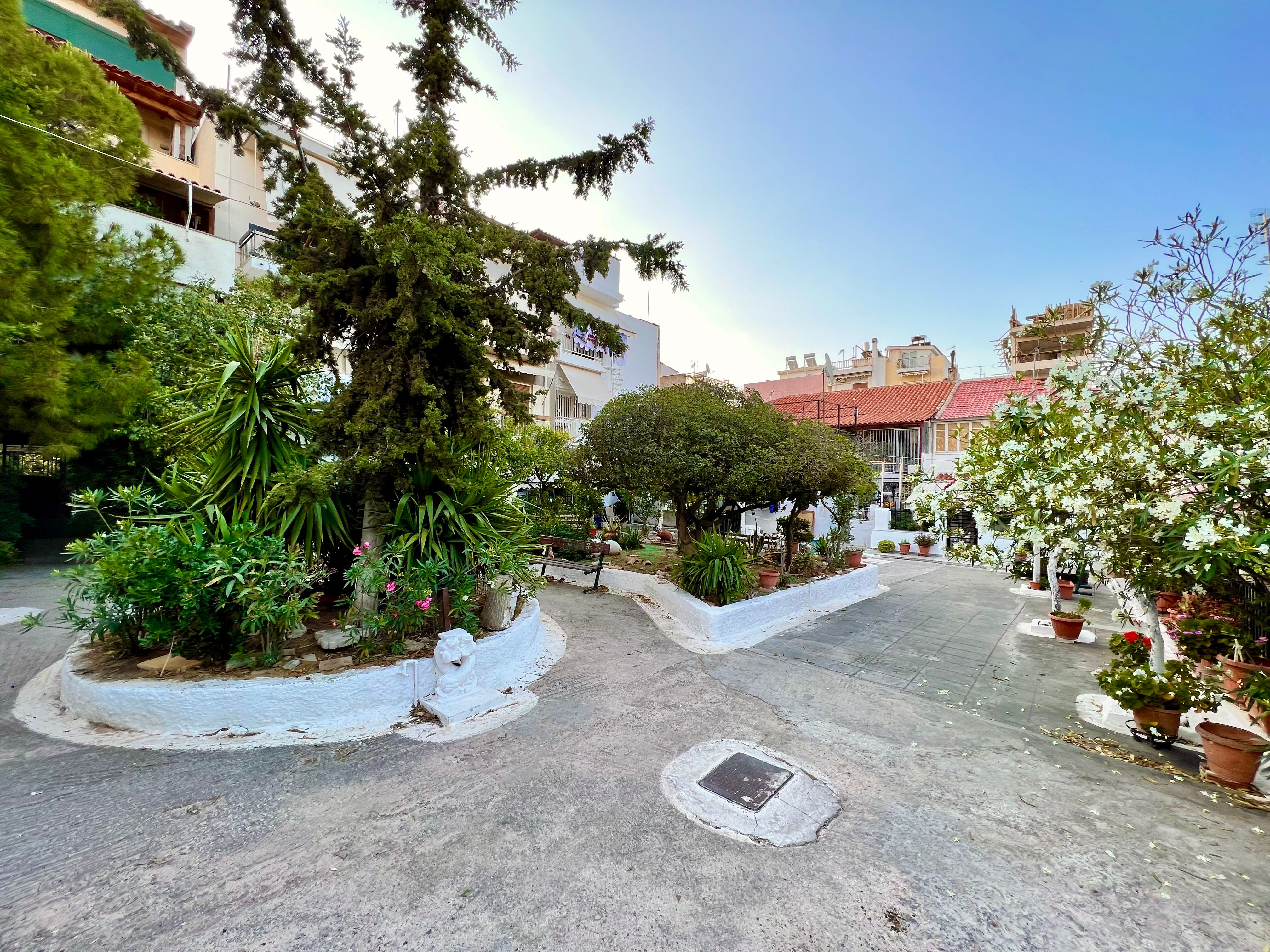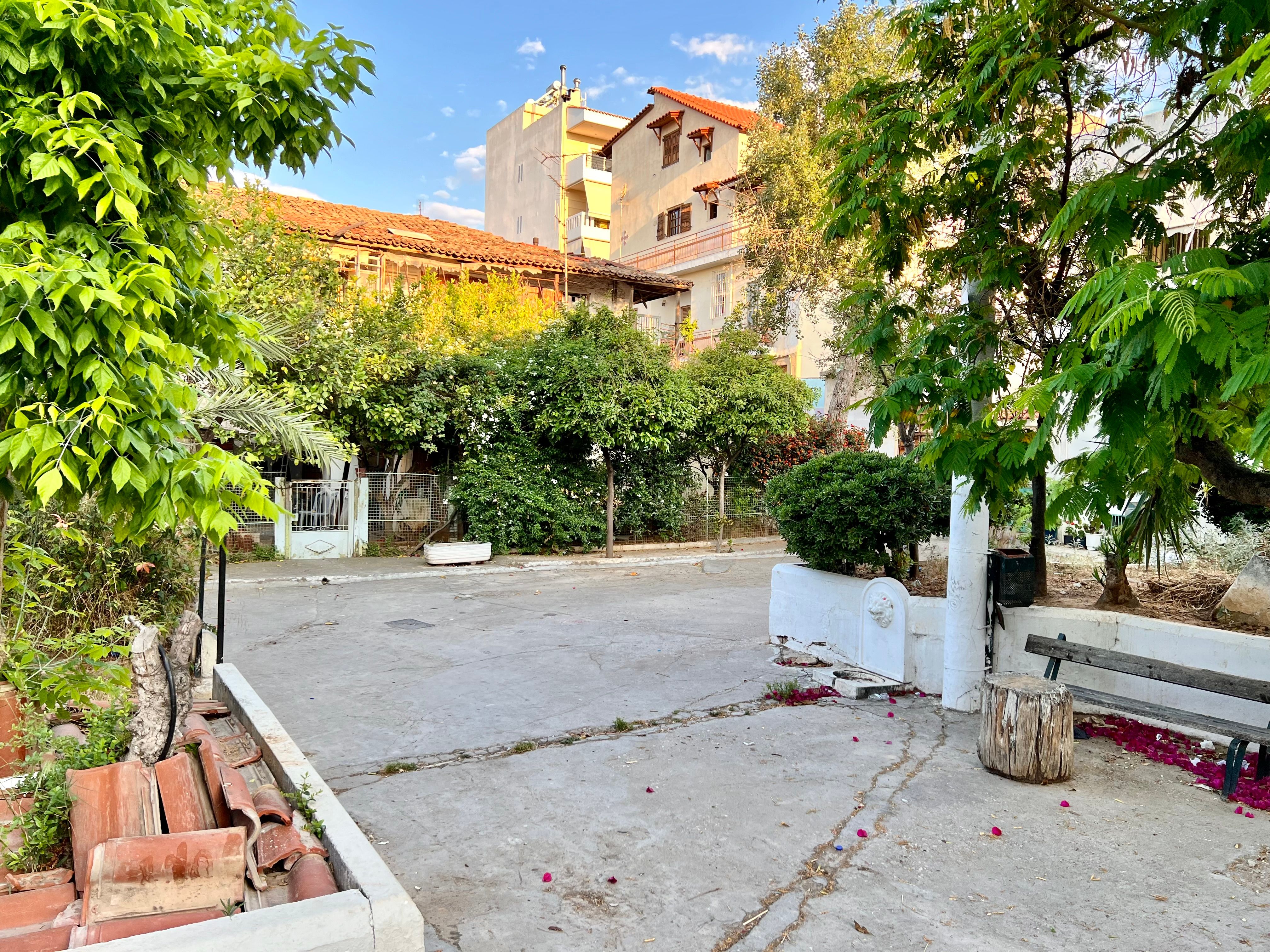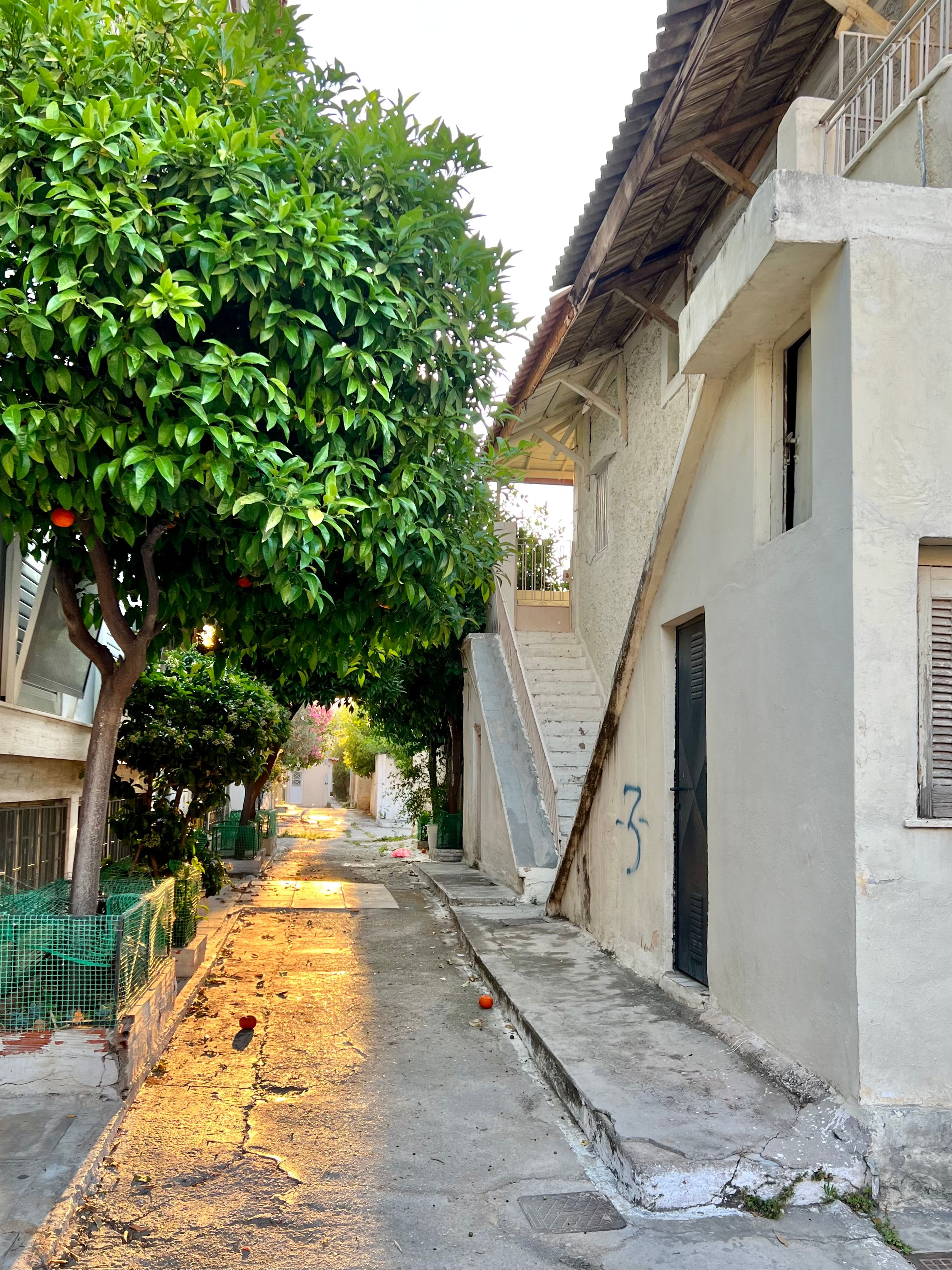The refugee courtyards
On the one hand, you have the avenues Petrou Ralli and Laodikeias, the city’s two main traffic arteries, which are noisy and in constant notion. But in between, there are the courtyards of the refugee houses, the ‘laundries’ – all of them unexpected oases of quiet, but also each one completely different from the next. Unlike the facades of the refugee buildings, which are all the same, their inner courtyards show considerable diversity. Some are well taken care of, others are neglected, but all are geometrically peculiar due to the refugee houses encroaching on them through successive expansions, their multiple uses (parking spaces, gardens, storage spaces), and their susceptibility to the residents’ whims, often reflecting the quality of the neighbourly relations on the block.
When you visit such a courtyard, you feel more like an ‘invader’ in a strictly personal space, despite the fact that the space is public and the residents are usually polite, cheerful and particularly eager to interact with visitors. Older residents commonly have a different form of extroversion compared to the newer residents: they spend more time in the courtyard, socialise more with their neighbours whom they’ve known for years, can immediately spot a visitor, easily take on the role of ‘block representatives’ who have a duty to talk about the beauty and the hardship they and their parents have experienced, gloss over the problems caused by neighbourly co-existence in the past, and complain about the new realities and difficulties that characterise life in these houses. They usually know the life stories of everyone who has ever lived on the block and have an interesting detail to share with the ‘foreigner’ who is visiting their neighbourhood.
Objects
